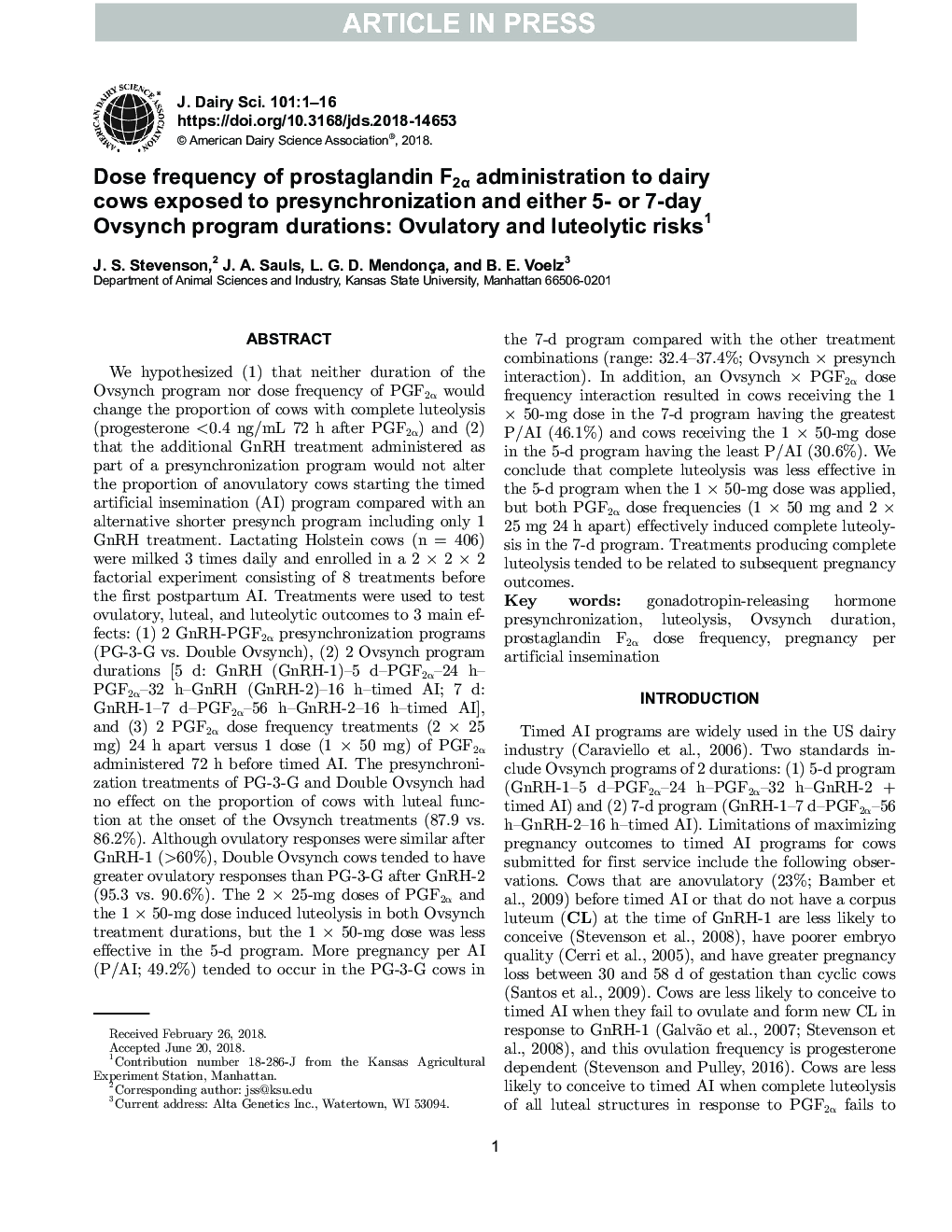| Article ID | Journal | Published Year | Pages | File Type |
|---|---|---|---|---|
| 10158115 | Journal of Dairy Science | 2018 | 16 Pages |
Abstract
We hypothesized (1) that neither duration of the Ovsynch program nor dose frequency of PGF2α would change the proportion of cows with complete luteolysis (progesterone <0.4 ng/mL 72 h after PGF2α) and (2) that the additional GnRH treatment administered as part of a presynchronization program would not alter the proportion of anovulatory cows starting the timed artificial insemination (AI) program compared with an alternative shorter presynch program including only 1 GnRH treatment. Lactating Holstein cows (n = 406) were milked 3 times daily and enrolled in a 2 à 2 à 2 factorial experiment consisting of 8 treatments before the first postpartum AI. Treatments were used to test ovulatory, luteal, and luteolytic outcomes to 3 main effects: (1) 2 GnRH-PGF2α presynchronization programs (PG-3-G vs. Double Ovsynch), (2) 2 Ovsynch program durations [5 d: GnRH (GnRH-1)-5 d-PGF2α-24 h-PGF2α-32 h-GnRH (GnRH-2)-16 h-timed AI; 7 d: GnRH-1-7 d-PGF2α-56 h-GnRH-2-16 h-timed AI], and (3) 2 PGF2α dose frequency treatments (2 à 25 mg) 24 h apart versus 1 dose (1 à 50 mg) of PGF2α administered 72 h before timed AI. The presynchronization treatments of PG-3-G and Double Ovsynch had no effect on the proportion of cows with luteal function at the onset of the Ovsynch treatments (87.9 vs. 86.2%). Although ovulatory responses were similar after GnRH-1 (>60%), Double Ovsynch cows tended to have greater ovulatory responses than PG-3-G after GnRH-2 (95.3 vs. 90.6%). The 2 à 25-mg doses of PGF2α and the 1 à 50-mg dose induced luteolysis in both Ovsynch treatment durations, but the 1 à 50-mg dose was less effective in the 5-d program. More pregnancy per AI (P/AI; 49.2%) tended to occur in the PG-3-G cows in the 7-d program compared with the other treatment combinations (range: 32.4-37.4%; Ovsynch à presynch interaction). In addition, an Ovsynch à PGF2α dose frequency interaction resulted in cows receiving the 1 à 50-mg dose in the 7-d program having the greatest P/AI (46.1%) and cows receiving the 1 à 50-mg dose in the 5-d program having the least P/AI (30.6%). We conclude that complete luteolysis was less effective in the 5-d program when the 1 à 50-mg dose was applied, but both PGF2α dose frequencies (1 à 50 mg and 2 à 25 mg 24 h apart) effectively induced complete luteolysis in the 7-d program. Treatments producing complete luteolysis tended to be related to subsequent pregnancy outcomes.
Related Topics
Life Sciences
Agricultural and Biological Sciences
Animal Science and Zoology
Authors
J.S. Stevenson, J.A. Sauls, L.G.D. Mendonça, B.E. Voelz,
